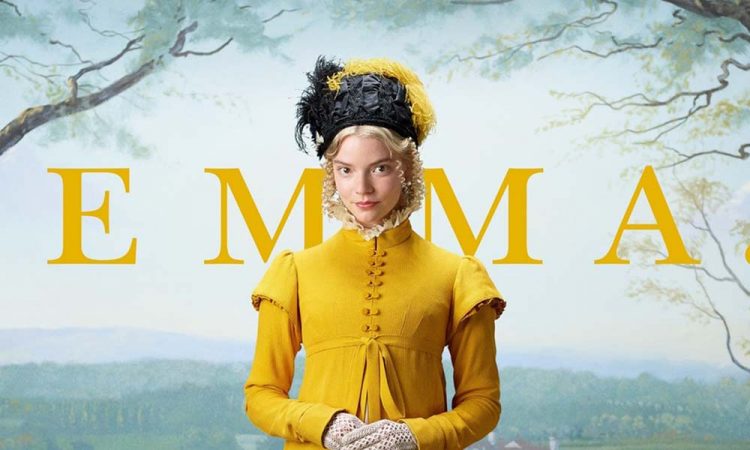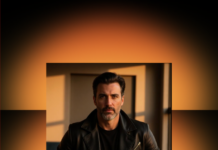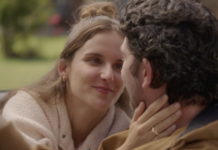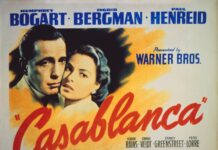Adapting a book into a movie’s screenplay is a tough ting to nail, but we have seen hundreds of examples over the years. Here are some of the best ones.

Hollywood has looked to books for inspiration for over a hundred years, pulling from both old classics and new bestsellers. Sure, people love to say the book was better, but sometimes the screen version steps up and surprises everyone. A few even become iconic in their own right. From To Kill a Mockingbird to Little Women, some books are just built to be told again and again.
Here are some of the best book-to-screen adaptations that got it right. They honored the original and still brought something fresh.
1. Emma (2020)
Novel – Emma
Author – Jane Austen
With what feels like a thousand adaptations of Jane Austen’s Emma out there, you would think we would be tired of seeing her story on screen. But then came the 2020 version starring Anya Taylor-Joy and directed by Autumn de Wilde, and suddenly, it felt fresh again. This version leans into the charm and chaos of the original while adding a modern gloss that makes it pop.
The sharp social critique in Austen’s work is softened a bit here, but what we get instead is a playful and more stylish take that embraces the humor and messiness. The real standout is Taylor-Joy, who plays Emma with an extra dose of attitude. She leans into the character’s flaws, making her even more infuriating and somehow more captivating. It all works in sync. The film walks a fine line between reverence and reinvention, and it nails it. In the end, this chaotic little world feels just as mischievous and lovable as Austen intended. Emma herself could not have made a better match.
2. Lincoln (2012)
Novel – Team of Rivals: The Political Genius of Abraham Lincoln
Author – Doris Kearns Goodwin
Steven Spielberg’s Lincoln may be “based in part” on Doris Kearns Goodwin’s Team of Rivals, but the connection runs deeper than the credits let on. The film, with Daniel Day-Lewis delivering an Oscar-winning turn as Abraham Lincoln, focuses mainly on one tight period: his push to pass the 13th Amendment through Congress. That is just a sliver of the book, which covers Lincoln’s life and political rise in sweeping detail. Still, the movie pulls key moments and nuances straight from Goodwin’s work. It captures Lincoln’s legal justifications for the Emancipation Proclamation, his dynamic with Mary Todd Lincoln, and his bond with Secretary of State William Seward. Even his habit of sharing long-winded, folksy stories makes the leap from page to screen almost word-for-word. The result is a film that does not just borrow from its source but pairs beautifully with it. Lincoln and Team of Rivals work as two sides of a rich and historical portrait.
3. To Kill a Mockingbird (1962)
Novel – To Kill a Mockingbird
Author – Harper Lee
Both the book and film versions of To Kill a Mockingbird continue to resonate deeply, even decades after their release. Harper Lee’s Pulitzer Prize-winning novel remains a staple in classrooms, while Gregory Peck’s portrayal of Atticus Finch stands as one of cinema’s most iconic performances. The story’s themes such as racism, justice, and empathy still hit hard in today’s world, proving just how timeless it is. There is little left to say that has not already been said about this classic. But if you have somehow missed it, consider this a gentle push. Few stories speak to the human condition so clearly. And honestly, the world could use a bit more of the understanding and compassion that Mockingbird so powerfully calls for.
4. Little Women (2019)
Novel – Little Women
Author – Louisa May Alcott
Little Women has seen plenty of screen adaptations, but Greta Gerwig’s 2019 version brings something new without losing the soul of Louisa May Alcott’s classic.
Rather than simply retelling the story, Gerwig reimagines it with a structure and tone that feel both modern and emotionally rich. She keeps the beloved moments, such as the scorched hair, the frozen pond, and the sibling clashes. But the director reshapes the narrative with a sharper focus on ambition, identity, and agency. The film highlights Jo March’s drive without downplaying the choices of her sisters, making space for every form of strength. While it nods to the past, it speaks clearly to the present, giving voice to themes that still resonate: independence, love, sacrifice, and purpose. Gerwig’s take surely adapts the book. But it also responds to it and carries Alcott’s message into a new century with care and style. It is a version that feels familiar yet bold, respectful yet forward-thinking. This is what makes the movie stand out!
5. The Princess Diaries (2001)
Novel – The Princess Diaries
Author – Meg Cabot
Page or screen, we all secretly want to be best friends with Princess Mia Thermopolis of Genovia. She is pretty, awkward, hilarious, and caught in swoony situations. In both the book and the movie, Mia’s world flips upside down when she finds out she is royal. Anne Hathaway shines in the film version, bringing early-career charm. Julie Andrews also delivers elegance as her grandmother. In the books, Grandmère is a bit less warm and a lot more blunt, but Mia’s diary-style narration makes up for it with nonstop laughs. The story works either way because it has what really matters: heart. Whether you prefer the snarky journal entries or the glow-up montage moments, Mia’s journey from awkward teen to reluctant royal is pure Genovian gold.
6. One Flew Over the Cuckoo’s Nest (1975)
Novel – One Flew Over the Cuckoo’s Nest
Author – Ken Kesey
Ken Kesey was not thrilled with the 1975 film adaptation of his novel One Flew Over the Cuckoo’s Nest. He felt the movie missed the heart of the story. However, most people disagreed, and the film became a cultural giant. It won five major Oscars and turned into one of the most praised films of all time. Jack Nicholson gives an unforgettable performance as Randle McMurphy, a free-spirited troublemaker who lands in a mental hospital and decides to shake things up. Louise Fletcher plays Nurse Ratched, cold and calm on the outside, but ruthless underneath. Their battle becomes the center of a story that still hits hard decades later.
The novel, though, takes a stranger, deeper route. It is told by Chief Bromden, a huge patient who pretends to be deaf and mute. His mind filters everything through paranoia and confusion. Kesey’s time working in a mental ward shaped the book. In addition to this, his experiments with psychedelic drugs also helped him write the novel. The final result is raw and trippy, unforgettable in its own way.
7. The Age of Innocence (1993)
Novel – The Age of Innocence
Author – Edith Wharton
Edith Wharton’s Pulitzer-winning novel brings old New York to life with sharp wit and rich detail. Her writing slices through the polished world of the late 1800s, exposing the rules, regulations, roles, and quiet cruelty of upper-class society. In 1993, Martin Scorsese took that world and put it on screen with stunning care. The film stays close to the book and lets its lavish sets, rich costumes, and glowing cinematography do the talking. It is a feast for the eyes, without losing the bite of Wharton’s prose.
At the center is Newland Archer, a respected lawyer played by Daniel Day-Lewis, who is engaged to the sweet but proper May. Then enters Ellen, May’s cousin, played by Michelle Pfeiffer. She is bold, free, charismatic, and everything May is not. The chemistry is slow and aching, made worse by all they cannot do. What unfolds is less about love and more about the quiet cages people build, even in the prettiest rooms.
8. Snowpiercer (2014)
Novel – Le Transperceneige
Author – Jacques Lob
Based on the French graphic novel Le Transperceneige, the 2014 film Snowpiercer brings a postapocalyptic story that is actually gripping. After a second ice age, the last of humanity survives on a massive train, where class divisions are literally built into each car. Bong Joon Ho’s English-language debut dives into themes of control, rebellion, and survival. In the film, Chris Evans plays the role of Curtis, who leads a revolt from the tail section toward the front. Tilda Swinton, nearly unrecognizable, plays Mason, the creepy mouthpiece of the brutal system that keeps the train running. The film earned praise for its bold visuals, inventive action, and the way it respected the original graphic novel. The impressive thing is that the novel hadn’t been widely available outside of France or Korea before. Snowpiercer is sharp and strange. It is also oddly grounded for a story set entirely on a speeding train.
9. Tinker Tailor Soldier Spy (2011)
Novel – Tinker Tailor Soldier Spy
Author – John le Carré
Tinker Tailor Soldier Spy gave the spy genre a cold and quiet edge that stuck. John le Carré’s 1974 novel follows George Smiley, a weary intelligence officer pulled back into action to find a Soviet mole hidden inside British Intelligence. It is slow-burn storytelling at its best, filled with shadowy meetings, cryptic messages, and steady unease. Readers praised its realism, its careful pace, and its fully drawn characters. Even actual spies have spoken about how close it felt to the real thing.
The story was first adapted by the BBC for both radio and television. But it was not until 2011 that it made its way to the big screen. Gary Oldman played Smiley with quiet control, leading a cast that included Tom Hardy, Colin Firth, Mark Strong, Ciarán Hinds, and Benedict Cumberbatch. The film kept the tension tight and the tone icy, staying true to the book. It earned Oscar nominations for Best Adapted Screenplay, Best Original Score, and Best Actor for Oldman. At the BAFTAs, it took home Best British Film!
10. Poldark (2015)
Novel – Poldark
Author – Winston Graham
From the moment British Army Captain Ross Poldark returns from the American Revolutionary War, things start falling apart. His father has died, his land is a mess, and the woman he loves is now engaged to his cousin. Both the book series and the TV adaptation dive into his world of life, loss, change, and second chances. They not only follow Ross, but each character gets their own interesting arc. Every character feels layered, and as the story unfolds, your loyalties might shift. One moment you are rooting for Ross, the next you are not so sure. But through it all, there is always someone you are hoping will find the happy ending they have been fighting for.
11. It’s Kind of a Funny Story (2010)
Novel – It’s Kind of a Funny Story
Author – Ned Vizzini
Inspired by his own struggles, Ned Vizzini wrote the 2006 novel It’s Kind of a Funny Story. The story follows teenager Craig Gilner after he checks into a psychiatric hospital seeking help. The book was praised for its honest, relatable take on teen mental health and was named one of the Best Books for Young Adults by the American Library Association in 2007. In 2010, it was adapted into a film starring Keir Gilchrist as Craig, alongside Emma Roberts and Zach Galifianakis. The movie avoids typical psych ward humor and instead focuses on quiet and heartfelt moments. Gilchrist captures Craig’s mix of anxiety and confusion with care. The cast’s chemistry also helps turn a tough subject into a thoughtful and hopeful story.
12. The Joy Luck Club (1993)
Novel – The Joy Luck Club
Author – Amy Tan
The Joy Luck Club explores the deep and often complicated bond between Chinese mothers and their American-born daughters. Amy Tan’s novel and its 1993 film adaptation both follow four immigrant women who gather regularly to play mahjong and share stories from their past. Each woman hopes to give her daughter a better life in America while also passing on the values and lessons shaped by her own experiences in China. The film brings these stories to life through rich flashbacks that show the mothers’ struggles and sacrifices. While the movie captures the heart of the novel, it does leave out certain cultural details. It is similar to the book’s strong focus on Chinese superstitions. Still, it remains a moving story about family, identity, and the clash between generations.
With this list in yoru hand, which one are you planning to see next?
















